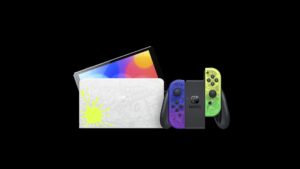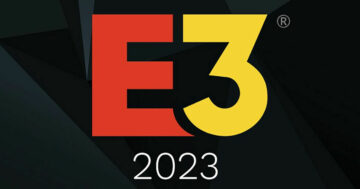As much as keyboard tech has moved on a lot in the last few years, there’s still been a quiet corner of the industry dedicated to the old school. Dig a little down the rabbit hole and you’ll find Unicomp, a manufacturer in Lexington, Kentucky dedicated to making modern recreations of the legendary IBM Model M ‘buckling spring’ keyboard using the same tooling (and many of the same employees) that produced the keyboard between 1985 and 1997.
Go a bit further though, and you’ll come across Model F Labs, a firm that has been dedicated to bringing to life a modern version of IBM’s original buckling spring keyboard, the IBM Model F, which preceded the Model M in the early 1980s. I remember floating around on keyboard forums back in the day and seeing the crowd-funded origins of the Model F project, and six years later I’ve finally got one of these modern Model F recreations in front of me – and boy is it fantastic.
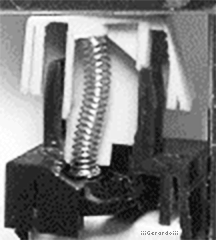
I’ll get into the reasons why this keyboard is so good in a moment, but it’s worth exploring the technicalities of buckling spring keyboards, and why people like them so much. They operate quite differently to your more standard issue mechanical keyboard switch, relying on a spring literally buckling against a plastic paddle beneath it; that paddle in turn presses against a capacitive plate on the PCB, completing an electrical circuit and registering an input. That’s putting it in as basic terms as I can, and I barely understand it!
The thing is, what I’ve explained there is the Model F’s buckling spring system – it’s a tad different for the Model M. When the Model M was conceived in the mid-eighties, it was designed as a more ‘affordable’ keyboard to bundle with IBM terminals of the time. As opposed to working on a capacitive plate with plastic paddles, the Model M’s springs work by pushing down on contact pads on a plastic membrane, completing the circuit. This elimination of the capacitive section of the mechanism is the sticking point for key feeling for a lot of enthusiasts, and it’s why a lot of them prefer the OG Model F, as opposed to the more common and readily available Model M.

The problem you’ve got though is that prices of these older keyboards have soared in the last few years, coinciding with both dwindling reserves of vintage keyboards and the boom in interest in mechanical keyboards generally, making these older IBM boards more desirable. Combine this with the difficulty of connecting these keyboards, which come with an old XT/XT connection that needs converting to modern USB standards, and the unfamiliar layout of a Model F XT, and for some it became a bit of a harder sell.
These modern recreations that company founder Strandberg has been conceptualising, testing, and bringing to market over the last six or seven years solve a lot of those issues. They bring with them modern creature comforts such as more familiar layout options (though classic styles remain available), USB connectivity and compatibility with firmware for remapping keys without needing to have a knowledge of electrical engineering. It’s a much easier sell – though at $325, it’s only for quite serious mechanical keyboard enthusiasts. (Evidently, people have been investing, as Strandberg’s website proudly displays a total of nearly $2.5m raised to date in bringing this project to life – I do love me some crowdfunding.)
So, enough background – let’s talk about what I’ve got in front of me. To be specific, this is the Ultra Compact version of the F77 variant, which provides a tenkeyless layout in a much sleeker looking case than the standard F77, which features all the bezels and retro styling associated with the original Model F. The chassis here though is still noticeably thick and heavy, with a total mass of 4.4lbs and die-cast aluminium construction. It’s a reminder of a bygone age when the keyboards that shipped with computers were designed to be used with the device itself, as opposed to being tossed into a drawer to never be used again. There isn’t any flex in the chassis, and this F77 Ultra Compact is incredibly well-built.
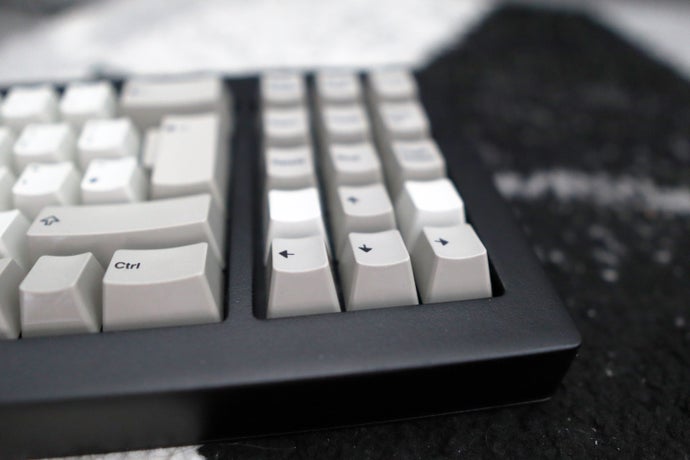
The excellent fit and finish isn’t just present on the case either, and also extends into the keycaps, which carry an excellent two-tone beige colouring to them – another reminder their 1980s vintage, when all computers and peripherals were seemingly of a similar colour. The keycaps themselves are comprised of textured PBT plastic and feature the same dye-sub legends as the original did, offering crisp lettering with a durable finish that will stand the test of time. It’s little things like this that help to justify that high price tag for enthusiasts.
Connectivity is nice and easy, with the F77 working via USB-A, and plugging into the keyboard itself with USB-C. The cable provided is braided and extra-long too, which is always nice. I should also say at this juncture that my F77 also came with another bag of keycaps, as well as a decent keycap puller, and manuals/order receipt that looked as if they came straight from forty years ago – a really nice touch.
And now onto the most important bit – typing feel. Well, I’ll make no bones about it – the F77 feels excellent. Its capacitive buckling springs, besides offering its signature loud click on key press, offers a reassuringly solid progression with a good level of tactility. It makes for an engaging typing experience that made banging out deals and reviews an absolute breeze.
It is a heavy key press though, with a force of around 65-70g, meaning if you aren’t used to it, it can get a little fatiguing for extended periods of use. The audible click provided is loud too, meaning this isn’t really a keyboard designed for use in communal areas, although typing at speed offered a certain rhythmic quality that kept me focused on the work at hand.
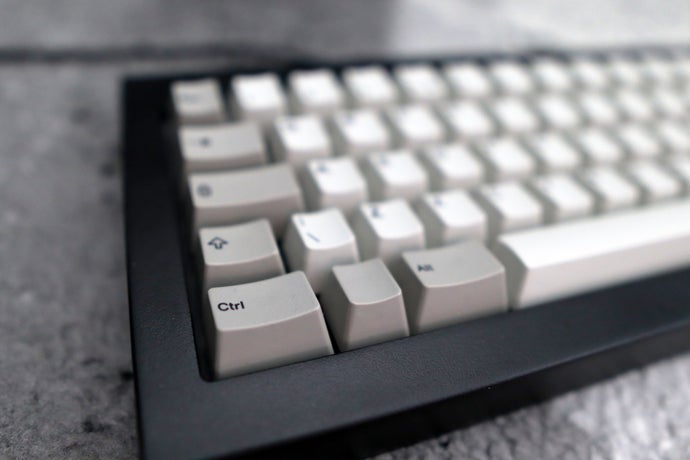
As I alluded to earlier, the F77 is also fully remappable, giving you the chance to remap keys as you see fit. It works either via QMK firmware or with the more user-friendly VIA, both of which allow for multiple layers for all of your key needs. This isn’t something I personally invested a lot of time into, but the method of remapping keys is convenient and the presence of multiple layers is sure to keep power users engaged.
So, is the F77 worth $325? As usual, this isn’t a straightforward answer. It’s a keyboard designed for a very specific niche, and for those people, myself included, it’s absolutely worth it. You get the gorgeous feel of capacitive buckling springs in an incredibly well-made chassis with modern fixings for a price that’s not too much more than vintage Model F keyboards fetch these days. We’re also at a point where a lot of custom keyboards can cost this much once configured, and they won’t offer a typing feel comparable with the F77.
However, in exchange for the feeling of buckling springs, you are giving up other modern touches such as backlighting, the potential for wireless connectivity, as well as enthusiast-level features such as sound dampening and hot-swappable PCBs to give you a virtually unlimited choice of compatible switches. If you’re an enthusiast who likes to chop and change, the F77 isn’t really the keyboard for you.
The bottom line as far as I see it though is this – the F77 Ultra Compact is an amazing keyboard for those wanting to experience the unrivalled feeling of capacitive buckling springs and the associated excellent typing experience, and worth the money. For anyone else, there are plenty of other ways to spend $325 that will be better for your own tastes. If anyone needs me, I’ll be clacking away on my F77!
- SEO Powered Content & PR Distribution. Get Amplified Today.
- PlatoData.Network Vertical Generative Ai. Empower Yourself. Access Here.
- PlatoAiStream. Web3 Intelligence. Knowledge Amplified. Access Here.
- PlatoESG. Carbon, CleanTech, Energy, Environment, Solar, Waste Management. Access Here.
- PlatoHealth. Biotech and Clinical Trials Intelligence. Access Here.
- Source: https://www.eurogamer.net/digitalfoundry-2023-model-f-labs-f77-ultra-compact-review-a-keyboard-from-a-by-gone-age
- 1980s
- 216
- a
- About
- Absolute
- absolutely
- across
- affordable
- again
- Against
- age
- ago
- All
- allow
- also
- Although
- always
- amazing
- an
- and
- Animation
- Another
- answer
- any
- anyone
- ARE
- areas
- around
- as
- associated
- At
- Audible
- available
- away
- back
- background
- basic
- BE
- became
- been
- being
- besides
- Better
- between
- Bit
- Boards
- bones
- boom
- both
- bottom
- Bottom Line
- bring
- bringing
- Bundle
- but
- by
- cable
- came
- CAN
- carry
- case
- certain
- chance
- change
- chassis
- choice
- Circuit
- Classic
- click
- combine
- come
- Common
- communal
- compact
- company
- comparable
- compatible
- completing
- comprised
- computers
- conceived
- configured
- connecting
- connection
- Connectivity
- construction
- contact
- convenient
- converting
- corner
- cost
- credit
- CRISP
- Crowdfunding
- custom
- date
- day
- days
- Deals
- dedicated
- designed
- device
- DID
- different
- difficulty
- dig
- do
- down
- earlier
- Early
- easier
- easy
- either
- electrical
- else
- employees
- engaged
- engaging
- Engineering
- enough
- enthusiasts
- exchange
- experience
- explained
- Exploring
- extends
- familiar
- far
- Feature
- Features
- feel
- few
- Finally
- find
- finish
- Firm
- fit
- focused
- For
- force
- forums
- founder
- from
- front
- fully
- further
- generally
- Get
- gif
- give
- Giving
- good
- got
- hand
- harder
- has
- Have
- heavy
- help
- here
- High
- hole
- HTTPS
- i
- IBM
- idea
- if
- important
- in
- Included
- incredibly
- industry
- input
- interest
- into
- invested
- investing
- Is
- isn
- issue
- issues
- IT
- ITS
- itself
- jpg
- just
- keep
- Kentucky
- kept
- Key
- Keyboard
- keys
- knowledge
- Labs
- last
- later
- layers
- layout
- left
- Legendary
- Legends
- let
- Let's Talk
- Level
- Life
- like
- likes
- Line
- Little
- ll
- looked
- looking
- lot
- LOUD
- love
- made
- make
- MAKES
- Making
- Manufacturer
- many
- Market
- mass
- me
- meaning
- mechanism
- Method
- model
- Modern
- moment
- money
- more
- most
- moved
- much
- multiple
- my
- myself
- nearly
- needs
- never
- Nice
- Niche
- no
- not
- now
- of
- offer
- offered
- offering
- Offers
- OG
- Old
- older
- on
- once
- One
- only
- onto
- operate
- operation
- Options
- or
- original
- origins
- Other
- out
- over
- own
- Paddles
- PCBs
- People
- periods
- peripherals
- personally
- plastic
- plato
- plato data intelligence
- platodata
- platogaming
- Plenty
- Point
- potential
- power
- prefer
- presence
- present
- press
- price
- prices
- Problem
- Produced
- progression
- project
- proudly
- provided
- provides
- pushing
- putting
- quality
- quite
- Rabbit
- raised
- RE
- readily
- really
- reasons
- registering
- relying
- remain
- Remember
- reminder
- reserves
- Retro
- reveals
- review
- Reviews
- s
- same
- say
- School
- section
- see
- seeing
- seemingly
- sell
- seven
- should
- signature
- similar
- SIX
- So
- solid
- SOLVE
- some
- something
- sound
- specific
- speed
- spend
- spring
- stand
- standard
- standards
- sticking
- still
- straight
- straightforward
- Styles
- such
- sure
- Switch
- system
- tag
- talk
- tech
- terms
- test
- Testing
- than
- that
- The
- their
- Them
- themselves
- there
- These
- they
- thing
- things
- this
- those
- though
- time
- to
- too
- tossed
- total
- touch
- touches
- triggers
- true
- turn
- Ultra
- Understand
- unfamiliar
- up
- usb
- USB-C
- use
- used
- user-friendly
- users
- using
- usual
- ve
- version
- very
- via
- vintage
- wanting
- was
- ways
- we
- Website
- well
- were
- What
- when
- where
- WHO
- why
- will
- wireless
- with
- without
- won
- Work
- working
- works
- worth
- XT
- years
- you
- your
- zephyrnet






